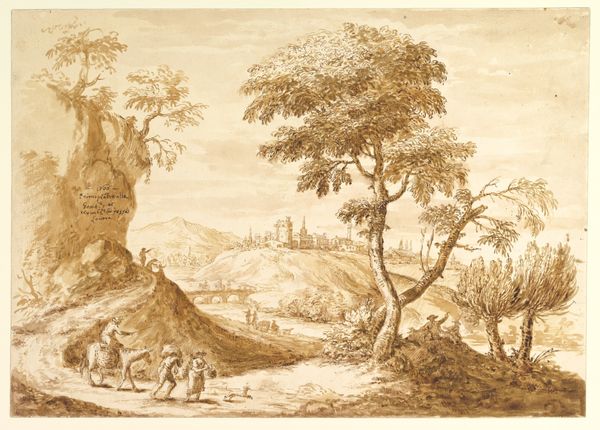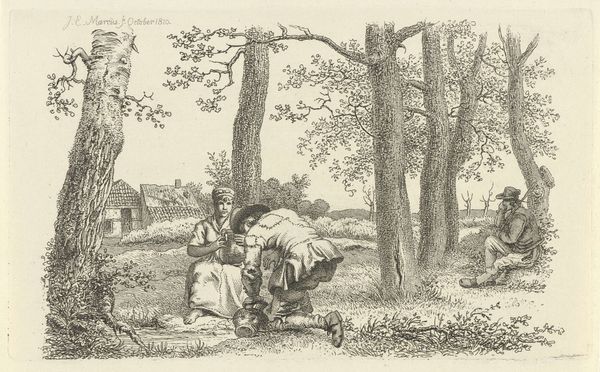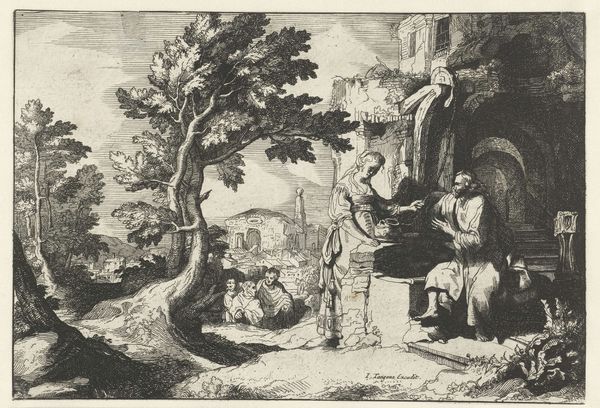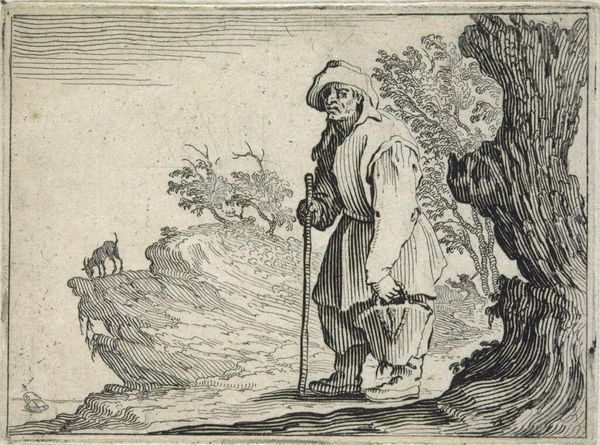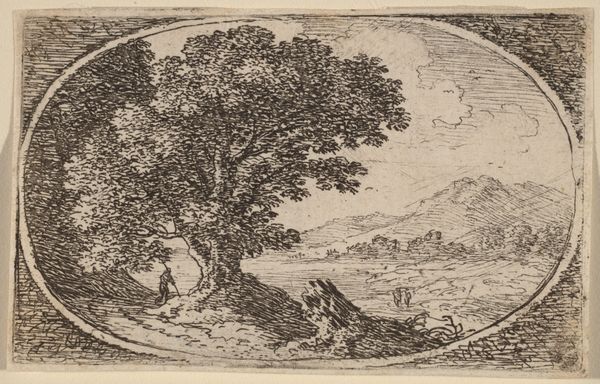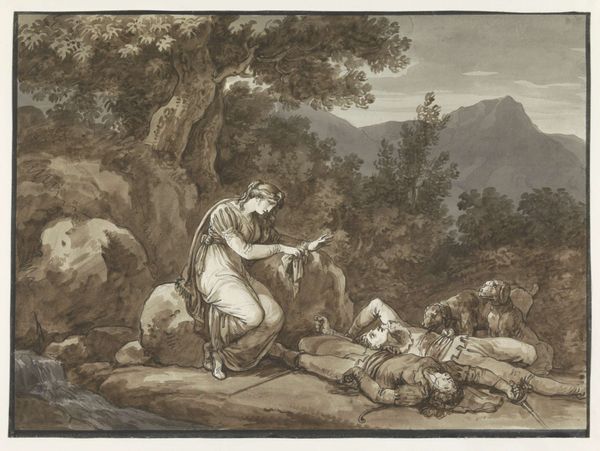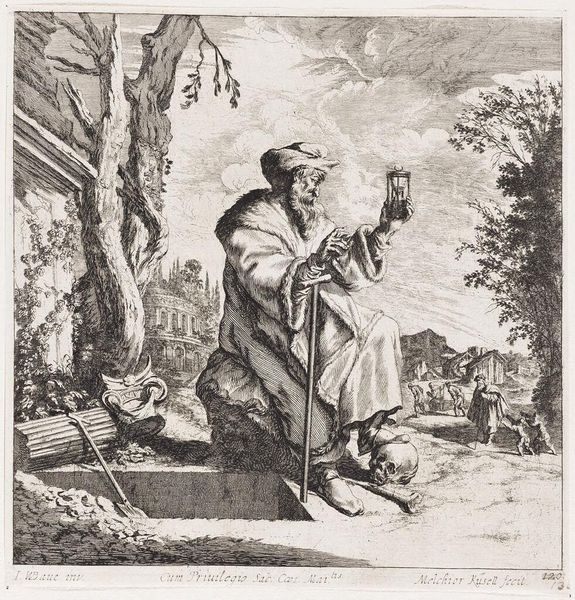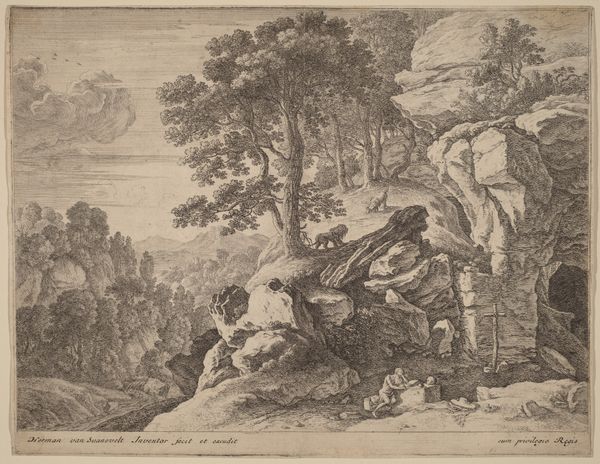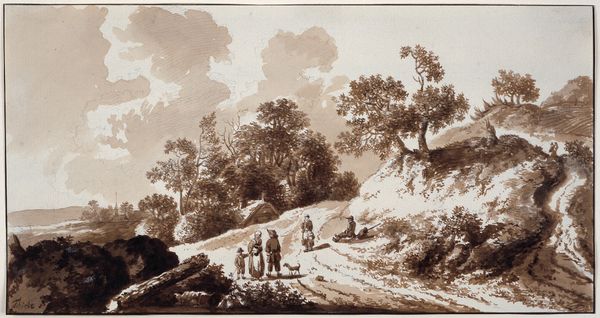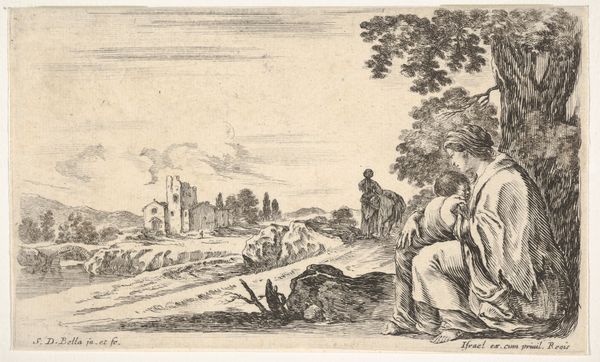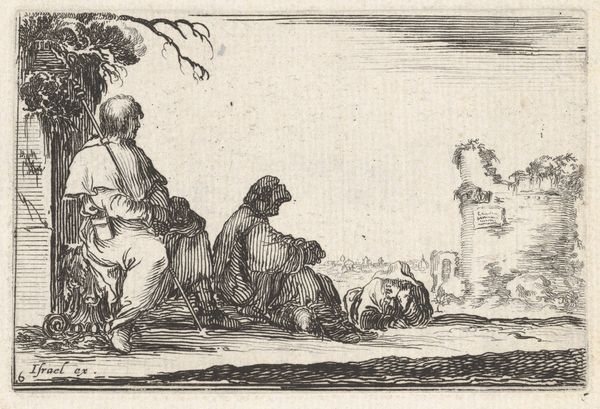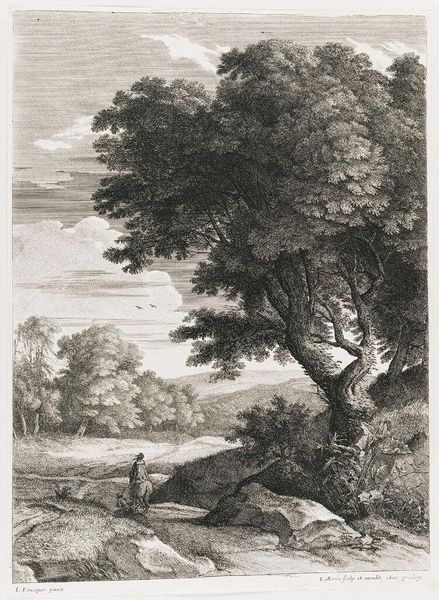
painting, oil-paint
#
fantasy art
#
painting
#
oil-paint
#
landscape
#
figuration
#
oil painting
#
romanticism
Copyright: Public domain
Edward Hicks created this landscape painting sometime in the first half of the 19th century. Hicks was an American folk painter known for his depictions of "The Peaceable Kingdom," which drew from biblical verses to imagine harmony between different species. This painting depicts a pastoral scene featuring livestock gathered beneath a prominent tree. The imagery resonates with the agrarian ideals that were central to the social and economic life of the early American republic. Hicks’ own Quaker beliefs, which emphasized peace, simplicity, and a connection to nature, are relevant here. The painting is an expression of a longing for a more harmonious society rooted in the values of rural life. To fully appreciate the art of Edward Hicks, it is important to understand his social, religious, and economic background. Archival research into Quaker history and the material culture of early America can offer valuable insights into the meaning and function of his images. Art, after all, gains its significance from the social and institutional contexts that shape its creation and reception.
Comments
No comments
Be the first to comment and join the conversation on the ultimate creative platform.
